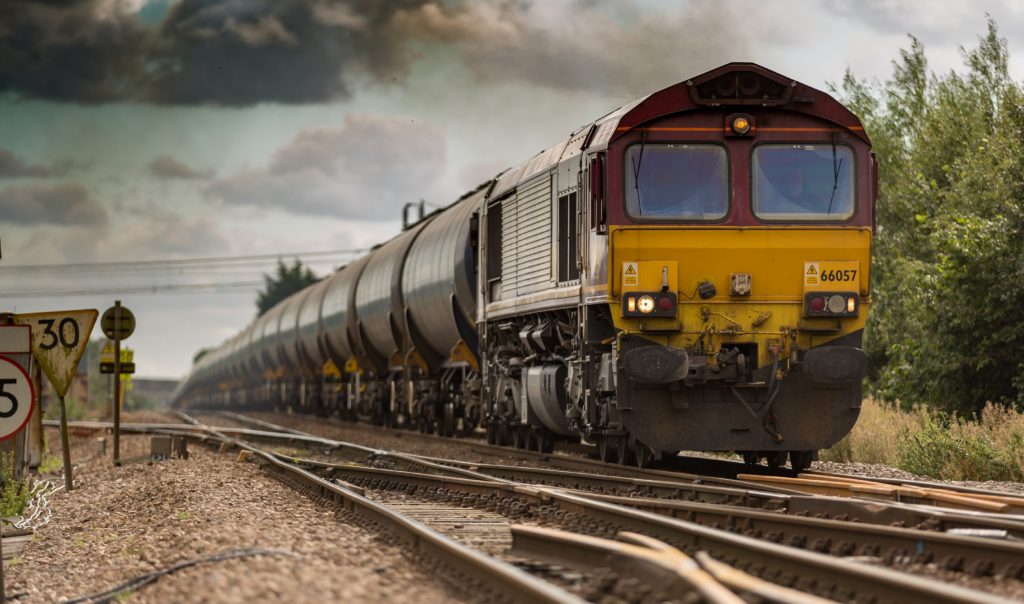As you’re deciding how to import your goods to the US, you’re probably mainly thinking about whether to use air freight or ocean freight. But did you know there’s a third option?
If you’re shipping your goods from Canada or Mexico, you can take advantage of the land borders. While the most popular choice is cargo trucks, there is the option to ship your goods by rail as well.
Of course, wherever there is an international movement of goods you’ll find the US Customs and Border Protection (CBP). In the case of rail freight, CBP checks about 25,000 cargo containers per day. They make sure there aren’t any illegal shipments (or stowaways) entering the country.
There are a total of 20 ports of entry in the US where trains can bring imported goods. As you might expect, they’re all in states that share a border with either Mexico or Canada. Hidden illegal drug shipments from both countries keep CBP officers on their toes.
Recently, CBP has taken steps to modernize its rail freight checking process. This could have positive implications for importers and train conductors alike. With the growth of North American trade due to the US-Mexico-Canada Agreement (USMCA), having a smooth-running rail import process is vital.
The big change
The main development that’s happening with the CBP rail freight process is the addition of new, more efficient scanners. This non-invasive technology was in the process of being refined during the pandemic when imports were low and CBP resources could be devoted to research and development.
The new scanner is sort of like a giant X-ray machine that the train actually passes through. It allows CBP officers to examine everything from the top of the rail car to the bottom. This scanner is not all that different from the kind CBP uses to inspect shipping containers and trucks.
Because CBP officers are specially trained to recognize different types of cargo, they can quickly scan a rail car to make sure it’s carrying what it’s supposed to. They receive a packing list from every importer in advance so they know exactly what to expect in each rail car.
CBP believes this development will significantly increase efficiency because trains can be examined much more quickly. The accuracy of these new scanners has also improved considerably, which means individual rail cars will not need to be manually inspected as frequently as before. Overall, the new scanners should make the process much safer and faster for everyone involved.
How this change affects importers
This new development is great news for importers who are looking for the best ways to import goods to the US. Shipping by rail is often one of the cheapest options due to the large capacity of trains. This shipment method is also incredibly fuel-efficient, making it a great green alternative for environmentally conscious companies.
With the new scanners, rail freight is faster and more efficient than ever. You’ll be able to get your goods across the border and into the hands of your customers in no time. Using trains also allows you to easily reach parts of the country that are far from the border. For example, you can ship goods from Mexico through Texas all the way to Colorado without much difficulty.
Keep in mind that CBP is installing these new scanners at 12 specific locations. Make sure your train route passes through one of these ports of entry to take advantage of this new technology.
How to ship goods by rail
If it’s the first time you’re thinking about importing goods by rail, you probably have a lot of questions. Overall, rail-based shipping is relatively similar to sea freight or air freight in terms of the documents you need to prepare. You’ll be accountable to CBP regardless of which shipping method you choose.
When planning to ship your goods by rail, the first step is thinking about the size of your shipment. If you plan to have large shipments, rail freight is the perfect choice for you. If your shipments are relatively small, you might want to consider a different shipping method that might be more affordable for you.
Of course, your business will likely grow. Rail freight is great for scalability because it can fulfill large shipment orders at a cheap price. If you’re thinking about the future, it might be wise to start using rail freight now to build it into your business model. Once your business expands, you’ll be ready to increase your cargo.
Next, think about which type of rail car is ideal for your products. Perhaps you’re importing food, so a temperature-controlled rail car is necessary. Or maybe you need to move large and heavy objects, which require a special team and rail car. You can also decide whether you prefer door-to-door service or delivery to a specific warehouse.
Maybe rail freight sounds like a good option, but you don’t have access to tracks in your supplier’s location. Intermodal shipping allows you to transfer your cargo between trucks and rail freight so you can get the cost benefits of shipping by rail no matter where your shipment originates.
Regardless of the shipping method you choose, you’ll need an experienced customs broker to help you with the details of the customs process. At BorderBuddy, we offer solutions for small, medium, and large businesses. Give us a call today.
